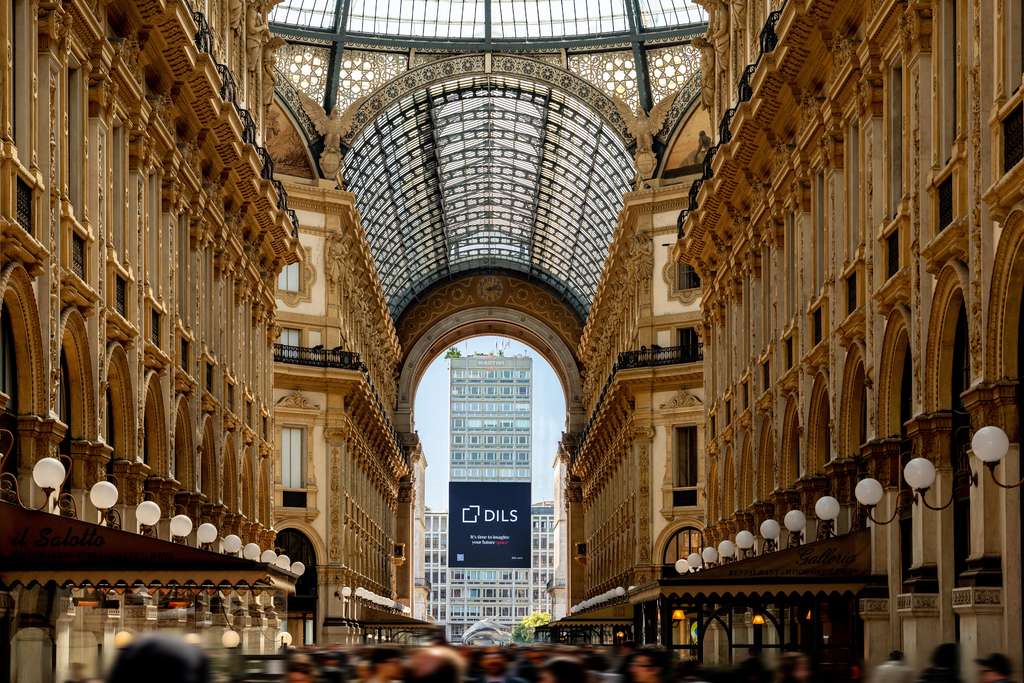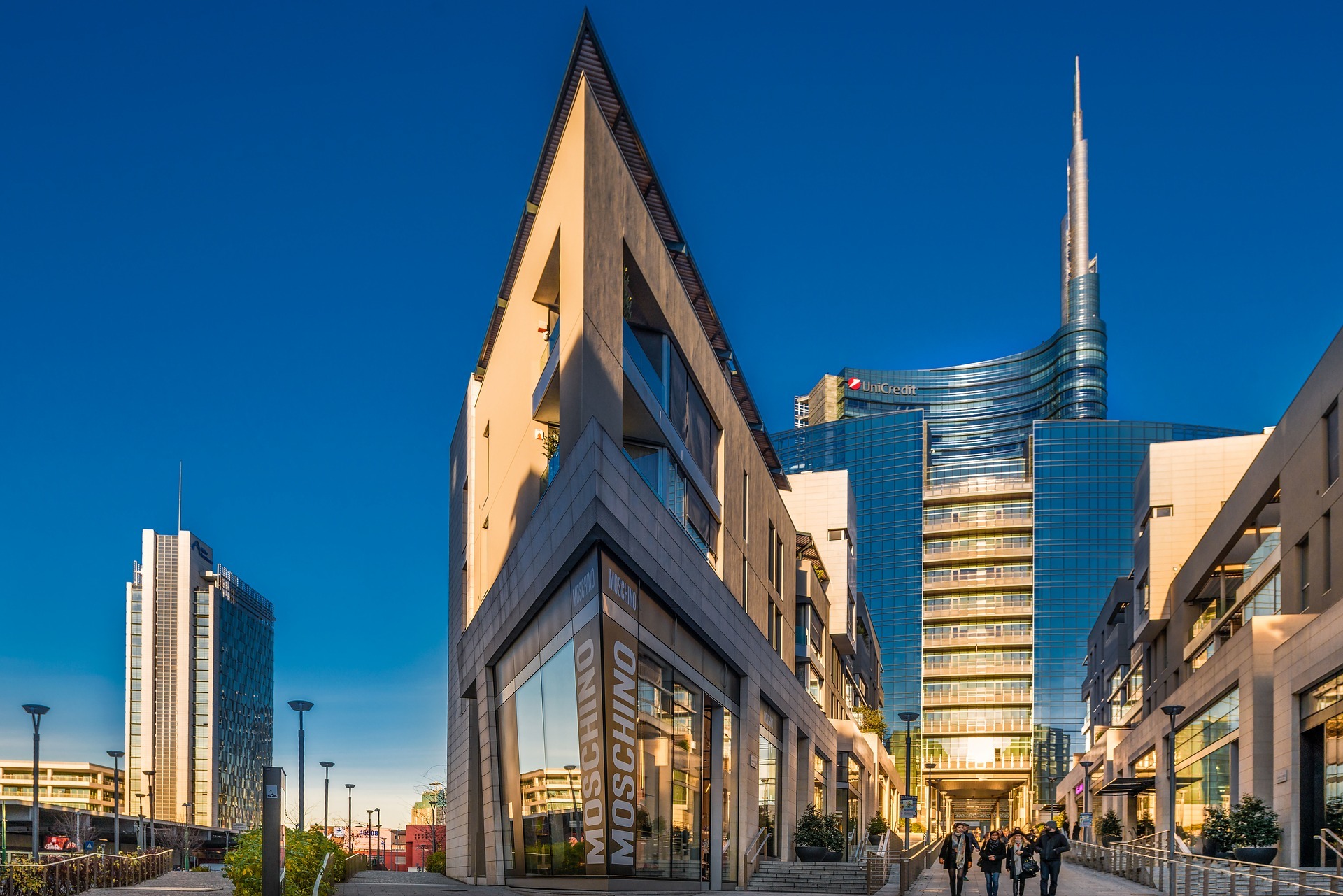Picture this: It’s spring in Venice. Marco, a Milan-based investor, sips an espresso while contemplating his bold move into luxury hospitality assets. Just six months ago, few saw such a leap coming, but today Italy’s real estate market is back in full color. Early 2025 has seen wild swings, bold bets, and unexpected winners in real estate transactions. Whether you’re a numbers person or you just love the thrill of spotting trends, there’s something undeniably captivating about what’s happening in Italian property right now. Let’s dig beneath the headlines and find out what’s really driving this renaissance.
Sector Surprise: Luxury Hospitality's Dazzling Comeback
The first half of 2025 has brought a remarkable transformation to the Hospitality Sector within the Italian Real Estate market. According to Dils Research, hospitality investments soared to €1.5 billion in H1 2025, marking an impressive 88% increase compared to the same period last year. This is not just a recovery—it's a dazzling comeback that has rewritten expectations for the real estate market in Italy.
What stands out most is the dominance of luxury hospitality assets in iconic Italian destinations. Rome, Venice, and Lake Como—already world-renowned for their cultural and scenic appeal—have become magnets for both domestic and international investors. In fact, four of the ten largest real estate deals in the first half of 2025 involved luxury hospitality properties in these coveted locations. It’s as if Venice’s canals suddenly started running with gold, attracting a new wave of capital and attention.
This surge is more than just a statistical anomaly. It reflects a deeper trend: tourism remains a bedrock for value generation in Italy. Even as other sectors like retail and logistics show renewed momentum, luxury hospitality stands out for its resilience and allure. The high-value nature of these transactions signals that investors see long-term potential in Italy’s top tourist destinations, especially at the upper end of the market.
- Hospitality investments hit €1.5 billion in H1 2025—up 88% from 2024.
- Four of the ten largest deals this half-year were luxury assets in Rome, Venice, and Lake Como.
- Italy’s top destinations continue to magnetize global and local investors.
Research shows that luxury hospitality is now a top performer, capturing the interest of both domestic and international buyers. Major European cities and iconic locales are driving these high-value deals, reinforcing Italy’s reputation as a premier destination for real estate investment. This trend is further supported by the broader resilience of the Italian housing market, where property prices have risen year-on-year, and demand continues to outpace supply.
The renewed investor confidence in the Hospitality Sector is also a testament to the enduring value of Italian tourism. As Dils Research notes:
“Italian tourism creates enduring value, especially among luxury assets—2025 is proof.”
This statement is more than just a reflection of current numbers; it highlights the strategic importance of hospitality within the wider Italian Real Estate landscape. The sector’s strong performance in 2025 is not only about capital flows but also about the unique ability of Italy’s luxury destinations to generate lasting value, even in a rapidly evolving global market.
For investors, the message is clear: Italy’s luxury hospitality market is not just back—it’s leading the way, setting new benchmarks for the entire real estate market in Europe.
Retail and Logistics: Two Tales of Revival
In the first half of 2025, Italy’s real estate market has witnessed a striking resurgence, particularly within the Retail Investment and Logistics Sector. Both segments have become focal points for capital flows, reflecting renewed confidence and a structural demand for quality assets. This revival is not just about numbers; it signals a shift in investment trends and the evolving priorities of both domestic and international investors.
Retail Investment: A Renaissance in Prime Locations
Retail investment in Italy reached its highest point since 2019, with a remarkable €1 billion invested during the first half of 2025. Over €500 million of this total was recorded in the second quarter alone, underlining the sector’s robust momentum. The surge is especially evident in Milan and Rome, where trophy assets—such as high street shopping centers and mixed-use developments—have drawn significant private capital.
A standout example is the recent deal involving Grandi Stazioni Retail S.p.A., which manages the retail spaces in Italy’s main railway stations. Although the unique structure of this transaction excluded it from official investment volume calculations, it is a clear indicator of growing global appetite for Italian retail infrastructure. As Grandi Stazioni Retail S.p.A. notes:
“Private capital is rediscovering the Italian retail scene, one landmark at a time.”
Research shows that this renewed interest is not just a temporary rebound. Rather, it is driven by the strategic value of prime retail locations and the adaptability of shopping centers to changing consumer habits. Investors are increasingly targeting assets that blend retail with other uses, ensuring long-term resilience and value.
Logistics Sector: Structural Growth and Quality Demand
The Logistics Sector has also experienced a period of strong growth, with investment volumes reaching €785 million in the first half of 2025—a 61% increase year-on-year. In Q2 alone, €141 million was invested, reflecting sustained interest despite a brief slowdown. The sector’s appeal is rooted in the structural demand for high-quality, newly built assets, which accounted for over 80% of Q2 take-up.
Logistics take-up rose by 13% quarter-on-quarter to 560,000 sqm in Q2, although the half-year total of 1,050,000 sqm was 11% lower than the previous year. This nuanced picture suggests that while overall activity has moderated, the market is stabilizing around premium assets and strategic logistics hubs. Prime rents remained steady in Milan and Rome at €70/sqm/year, with Verona seeing an increase to €60/sqm/year.
Studies indicate that both the retail and logistics sectors are benefiting from a broader shift in investment trends across the real estate market. Investors are prioritizing locations and assets that promise long-term growth, adaptability, and resilience in a rapidly changing economic landscape.
- Retail H1 2025 investment: €1 billion (Q2: €500M+)
- Logistics H1 2025: €785 million investments (+61% YoY)
- Logistics Q2 take-up: 560,000 sqm (+13% QoQ), H1: 1,050,000 sqm (-11% YoY)
As Italy’s real estate market continues to evolve, the revival of retail and logistics stands out as a testament to the country’s enduring appeal and the dynamic nature of its investment landscape.

Residential and Living: Buyer Confidence Recharged
Italy’s residential real estate market is experiencing a remarkable resurgence in 2025, with buyer confidence reaching new heights. The first quarter alone saw 172,048 residential sales, marking an impressive 11.2% year-on-year increase. This surge in residential sales reflects not only pent-up demand but also a shift in market dynamics, as both local and international buyers respond to evolving economic conditions and lifestyle needs.
A key driver behind this upswing is the continued decline in mortgage rates. By Q1 2025, the average mortgage rate had dropped to 3.22%, a significant reduction of 76 basis points compared to the previous year. This downward trend in financing costs has made homeownership more accessible, particularly in Italy’s main urban centers. As Dils Research notes,
“Lower rates mean more families can move forward with their homeownership dreams.”The impact is clear: in Milan, 53.5% of residential purchases were mortgage-backed, while Rome saw an even higher share at 58.7%.
Milan remains a focal point for Italian housing activity. The city recorded 5,505 transactions in Q1, up 7.1% year-on-year. Interestingly, over 65% of buyers in Milan preferred homes under 85 square meters, reflecting a trend toward more compact, efficient living spaces. New builds are also gaining traction, making up 9.5% of sales in Milan—well above the national average. Rome, meanwhile, registered 8,528 transactions (a 10.7% increase), with nearly half of buyers seeking larger homes over 85 square meters. New builds accounted for 8.1% of Rome’s sales, signaling a return to pre-pandemic levels.
Research shows that Italy property prices continue to rise year-on-year, driven mainly by the existing home segment, which saw a 4.9% annual increase. While new builds experienced a modest 1.5% rise, a slight quarterly dip in new-build prices has not dampened overall market enthusiasm. Demand for housing still outpaces supply, especially in sought-after regions like Milan, Venice, and Trentino-Alto Adige, supporting a positive outlook for living sector investments.
The Living sector itself is diversifying rapidly. Student housing now represents nearly a third of all living sector investments, underscoring the growing appeal of specialized residential assets. Temporary rental contracts are also on the rise, particularly in Milan and Rome, where traditional long-term leases are giving way to more flexible arrangements. In Rome, standard 4+4 leases dropped by 12%, while temporary contracts increased by 2.8%. Milan saw a smaller decline in standard leases (1.3%) but a notable 6% rise in temporary contracts.
These trends highlight how Italian housing is adapting to changing demographics, economic realities, and investor priorities. With favorable mortgage conditions and robust demand, Italy’s urban markets are leading the way, while the living sector continues to evolve—placing student and build-to-rent housing firmly in the spotlight.
Office Spaces & Alternatives: Evolving Needs, Evolving Spaces
Italy’s Office Space Market in the first half of 2025 offers a compelling snapshot of how commercial real estate is adapting to new realities. With investments holding steady at €790 million for H1, the sector demonstrates both resilience and a capacity for transformation. Milan stands out as the clear leader, commanding 84% of all office investment and setting a new record for office space take-up. In just six months, Milan saw 205,000 sqm of office space absorbed—a 15% increase year-on-year—driven largely by medium-sized units and a clear preference for high-quality, Grade A/A+ properties.
This momentum in Milan is not just about numbers. It signals a deeper shift in how businesses and investors view office environments. As Dils Research notes,
“As work evolves, so do our expectations from buildings—today, the ‘office’ is an experience.”Flexible layouts, coworking options, and amenity-rich buildings are no longer fringe concepts; they are central to the modern office landscape. The demand for flexibility and quality is shaping the very fabric of Italy’s office sector, with prime rents in Milan holding at €775/sqm/year and likely to rise further.
Rome, by contrast, has faced a more challenging period. Office take-up in the capital dropped to 53,000 sqm for H1, a notable decline both quarter-on-quarter and year-on-year. The scarcity of premium office space is becoming pronounced, not just in the city center but also in the EUR Core area, where prime rents have climbed to €400/sqm/year. This shortage highlights a broader trend: quality and adaptability are now the defining features of successful office assets.
Beyond traditional offices, Alternative Assets are rapidly gaining traction in Italy’s Commercial Real Estate market. The first half of 2025 saw €790 million invested in alternatives, with a remarkable €580 million flowing in during Q2 alone. Healthcare assets, in particular, stood out—€266 million was invested in Q2, supported by major portfolio transactions. Education-themed mixed-use developments also made headlines, reflecting a growing investor appetite for properties that align with societal needs and technological progress.
Research shows that this shift toward alternatives is more than a passing trend. Investors are increasingly drawn to sectors like healthcare, education, and data centers, which are seen as resilient and future-proof. These segments not only offer stable returns but also address fundamental changes in how people live, work, and learn. The rise of flexible, amenity-focused spaces—whether in offices or alternative assets—mirrors broader occupational and societal trends across Italy.
In summary, the first half of 2025 has rewritten the rules for Italy’s Office Space Market and Alternative Assets. Milan’s dominance, the surge in high-quality and flexible office spaces, and the growing significance of healthcare and education properties all point to a market in transition. As Italy’s Investment Trends continue to evolve, the focus will remain on adaptability, quality, and alignment with the changing needs of both businesses and society at large.
TL;DR: Italy’s property market kicked off 2025 with a 50% jump in investments, with luxury hospitality, retail rebirth, and standout logistics growth leading the way. Investors are back, yields are holding strong, and both Milan and Rome are hubs for residential and commercial action.

.jpeg)

.jpeg)